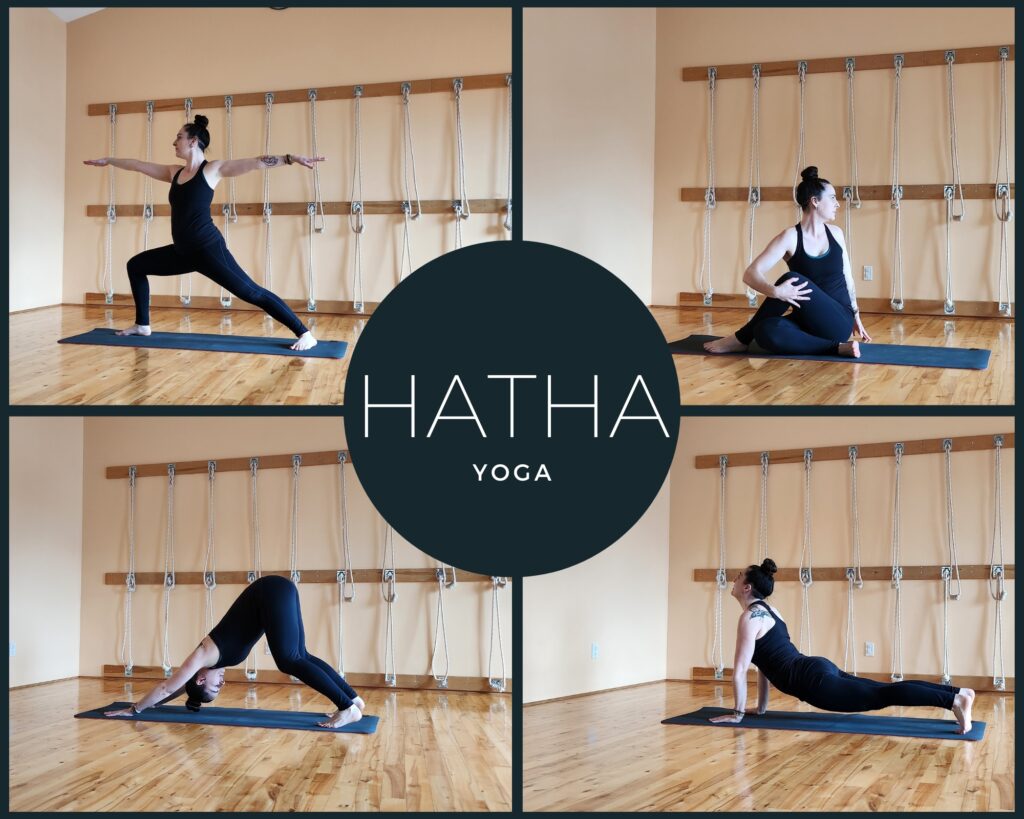
Hatha Yoga

In Sanskrit, hatha means “force”, and in yoga this directly relates to the physical techniques – asanas – of our practice. However, hatha yoga is not solely about the asanas. There is attention paid to the breath – pranayama – and meditation.
What is Hatha?
So what is Hatha? There’s actually more than one way to interpret the Sanskrit word hatha. The first one looks at the word as a whole and means “force”. In yoga this directly relates to the physical techniques – asanas – of our practice. However, hatha yoga is not just about the asanas. There is attention paid to the breath – pranayama – and meditation. This is where the second interpretation of the word comes in: Ha means “sun” and tha means “moon”. Just as the Earth needs these two to sustain life, hatha yoga is about bringing balance to these elements in ourselves, through breath, movement, and the mind.
A hatha practice often focuses on one pose at a time. No need to rush into the next movement, but instead allows the yogi to sit with the pose for a breath or two. No two hatha yoga classes are alike as each instructor brings their unique personality to the practice. And while a hatha yoga class may include vinyasa flows, it does not have to, perhaps opting instead to focus on other poses and transitions.
The goal of hatha yoga is as varied as its practitioners: bodily benefits, spiritual liberation, self-knowledge, and enjoyment. Whatever your personal goals and your reason for starting a hatha practice, you’re sure to find a home here.
Diving Deeper in Hatha Yoga
Hatha connects the 8 limbs of yoga (as taught by Patanjali):
- YAMA – Restraints, moral disciplines, or moral vows
- NIYAMA – Positive duties or observances
- ASANA – Posture
- PRANAYAMA – Breathing techniques
- PRATYAHARA – Sense withdrawal
- DHARANA – Focused concentration
- DHYANA – Meditative absorption
- SAMADHI – Bliss or enlightenment
YAMA
The 5 Yamas: non-harming (ahimsa), truthfulness (satya), non-stealing (asteya), moderation (brahmacarya), and non-attachment (aparigraha).
NIYAMA
The 5 Niyamas: cleanliness (shauca), contentment (santosha), discipline (tapas), self study (svadhyaya), surrender (ishvara-pranidhana).
ASANA
Originally, Asanas were stable, comfortable poses that allowed the yogi to enter into their meditation. Nowadays, it is what comes to mind first when someone thinks of yoga – the poses and movements of a practice.
PRANAYAMA
The word Pranayama contains the Sanskit words for “breath/life force” and “extension”. The purpose of pranayama is the control of the movement of the mind. There are a multitude of different breathing techniques that hold different purposes for the yogi.
PRATYAHARA
Pratyahara can also be defined as the ability to enter into a state of inward mindfulness. Inward mindfulness can only be achieved when one is completely focused on the present moment.
DHARANA
This is the practice of continuous attention, and precedes meditation. Concentration can be focused on a deity, internalized sound, or a locus in the body.
DHYANA
Meditation is the natural continuation or deepening of our concentration and is fundamental to all yogic paths. There are many types of meditation and yogis are encouraged to explore to find the meditation that suits them.
SAMADHI
Samadhi cannot be reached without dhyana, and is the final limb of the yogic path. Perhaps the most complex, samadhi is often described as identifying with one’s transcendental self, where the yogi reaches the union between their psyche and self.

